False ceilings in modern interior design have become more than a cosmetic element; they’re a combination of function and fashion. A false ceiling (also known as a drop ceiling or secondary ceiling) refers to a construction below the main, upper ceiling, often used to hide electrical wiring, provide heat insulation, and add a touch of sophistication to any room.
False ceilings in Nepal are highly demanded today, especially in urban residences, office spaces, hotels, and business establishments. Besides giving a clean, upscale look, they can be helpful in temperature regulation, soundproofing, and lighting.
In this blog, we’ll explore the different types of false ceilings, their key features, price ranges, and practical tips to help you choose the right option for your home.
What are the factors to consider before installing a false ceiling?
Before detailing the types of false ceilings, you must be aware of the influencing factors for your choice. Such factors help you get the appropriate design, material, and performance of a room.
Some of the factors to consider before installing a false ceiling are:
- Purpose: Decide whether the false ceiling would be for domestic, commercial, visual, or sound purposes. Knowing its function would assist in procuring the right design and material to solve your specific issue.
- Room type: Different rooms have dissimilar requirements, so choose the ceiling material accordingly. Kitchen, for example, can have moisture-resistant PVC, but a living room can be sufficiently catered to by the charm of wood or POP.
- Ceiling height & existing structure: Ensure that the selected design does not create a low or claustrophobic feeling in the room. This should be particularly avoided in small rooms, in which a large false ceiling may minimize the impression of space.
- Moisture resistance: When used in rooms that include kitchens, bathrooms, or basement levels, moisture resistance can help prevent damage and mold. The right choice of material can extend the life of the ceiling considerably.
- Budget and maintenance: Think not only about the initial installation cost but also the repeated cost of maintenance. An additional initial cost in high-quality material can pay dividends later in not having to repair and replace as often.
Types of False Ceilings in Nepal
Different materials, styles, and finishes create unique aesthetics and performances. The one to consider would depend on your budget, style, and the unique needs of the room.
Here is a general comparison:
|
Types of Ceiling
|
Price per sq ft. (NPR)
|
Best for
|
|
Gypsum False Ceiling
|
120 – 180
|
Modern homes, offices
|
|
PVC False Ceiling
|
100 – 150
|
Kitchens, bathrooms
|
|
POP Ceiling
|
140 – 200
|
Decorative designs
|
|
Metal False Ceiling
|
200 – 300
|
Industrial, commercial
|
|
Wooden False Ceiling
|
300 – 600
|
Luxury interiors
|
|
Glass False Ceiling
|
400 – 800
|
Contemporary designs
|
Below is the general classification of the above table:
1. Gypsum False Ceiling
False ceilings of gypsum consist of modern, fashionable, and elegant panels of hydrated calcium sulfate. The false ceilings are light in weight and fire-resistant, and can easily be customized using lighting and paintings for all types of interior designs.
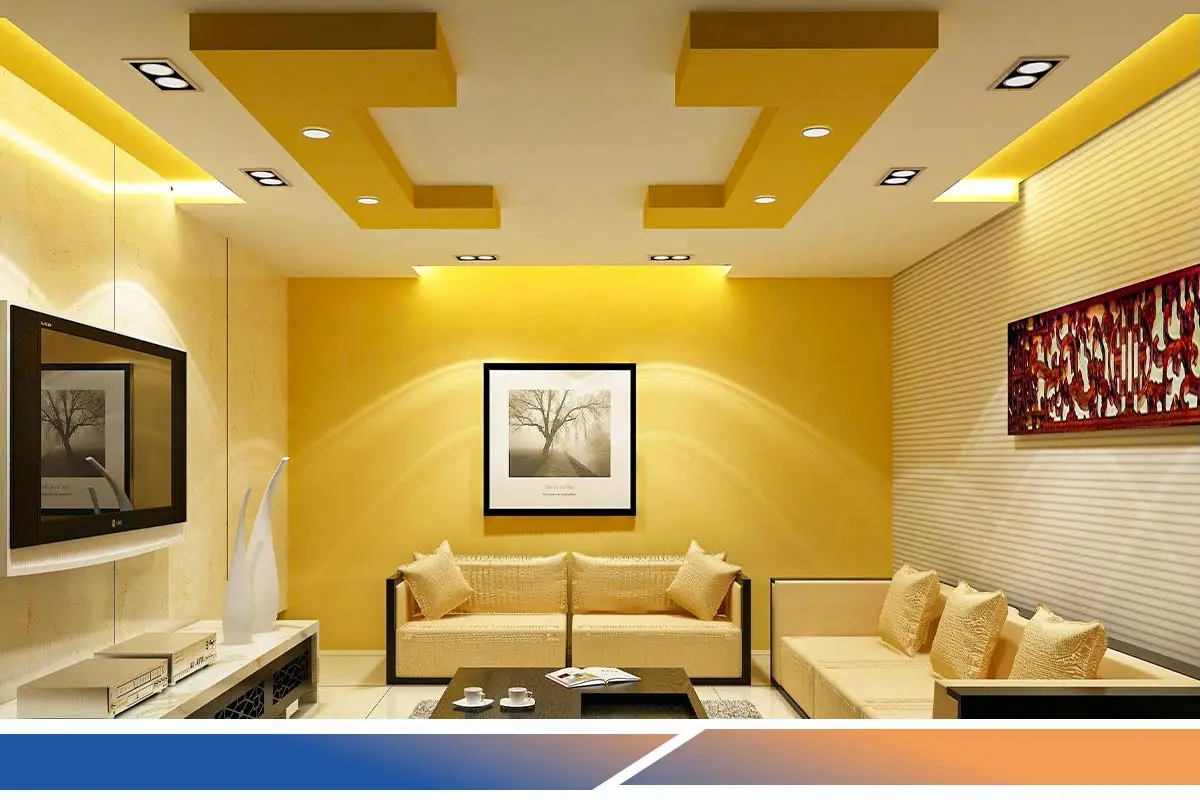
Features:
- Gypsum ceilings offer a smooth and continuous surface and a sleek, modern finish.
- They offer effective thermal insulation, maintaining comfortable interior temperatures.
- They are fireproof and provide a fire-safe option for domestic and commercial premises.
Best for: Gypsum false ceilings are best for modern homes, offices, and commercial spaces that need a clean, minimal, and sophisticated look. They work particularly well in living rooms, bedrooms, and meeting rooms where aesthetics and functionality are equally important.
Pros:
- They are lightweight, therefore they will be easier to transport and install.
- They can be integrated into LED lighting to provide both improved aesthetics and performance.
- They aren’t expensive, but they do offer good durability.
Cons:
- They are prone to damage from moisture, which restricts their applications in wet conditions.
- They should be installed professionally to provide an immaculate finish.
Price in Nepal: NPR 120 – 180 per sq ft.
2. PVC False Ceiling
PVC false ceilings are made of Polyvinyl Chloride and are resistant to moisture and termite attack, and long-lasting. They can be in colors and patterns, which are best suited to low-maintenance damp areas.
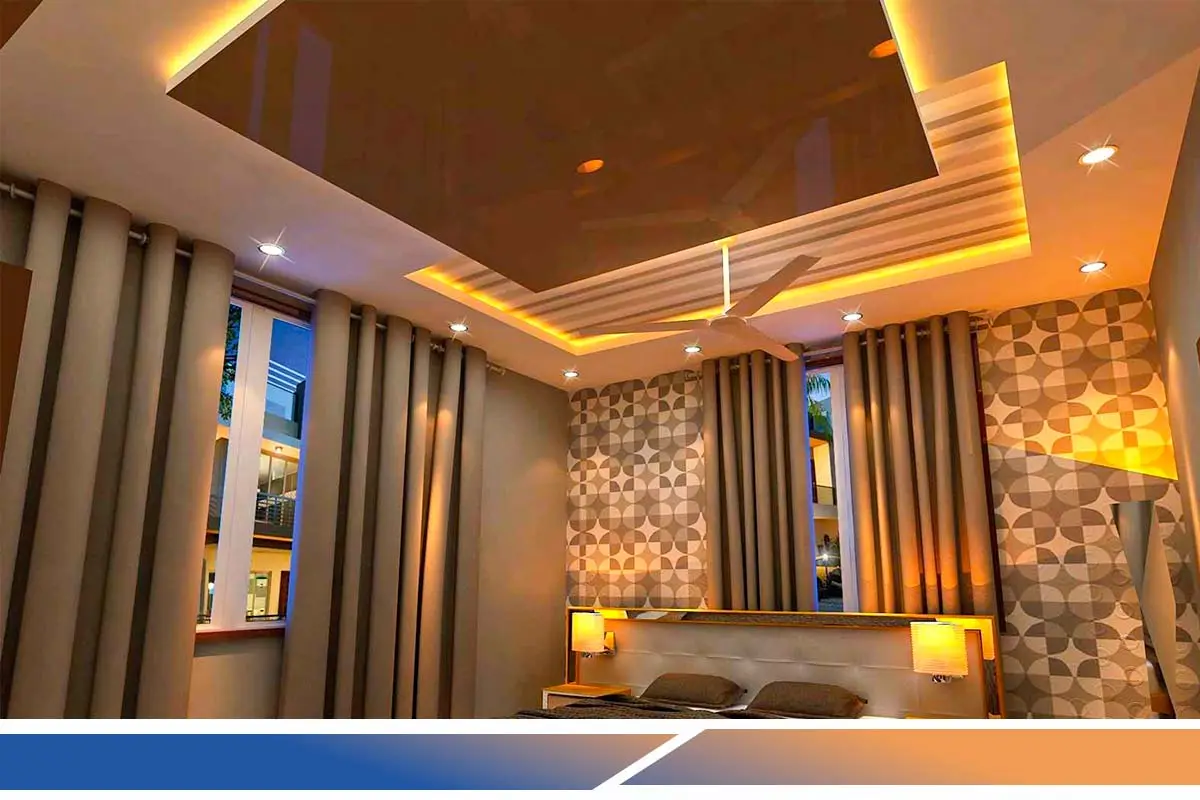
Features:
- PVC ceilings are water and termite-proof, and they offer long-term performance.
- They are available in a very wide range of styles and colors to suit wide-ranging interiors.
- They can be easily wiped, so they would be ideal for locations that should be frequently cleaned.
Best for: PVC false ceilings are ideal for kitchens, bathrooms, and laundry areas where moisture resistance is essential. They are also a practical choice for budget-conscious homeowners who want durability without frequent maintenance.
Pros:
- They do not require much maintenance and can be easily wiped clean.
- They resist corrosion and moisture, and this adds to their longevity.
- They are cheaper and can be used on wet exposure work.
Cons:
- They have limited applications in high-end interior projects.
- They are not an eco-friendly material.
Price in Nepal: NPR 100 – 150 per sq ft.
3. POP (Plaster of Paris) Ceiling
POP ceilings are made of fast-drying gypsum plaster, which allows for easy molding and decoration. They provide a smooth, paintable surface, ideal for adding aesthetic features to interior zones.
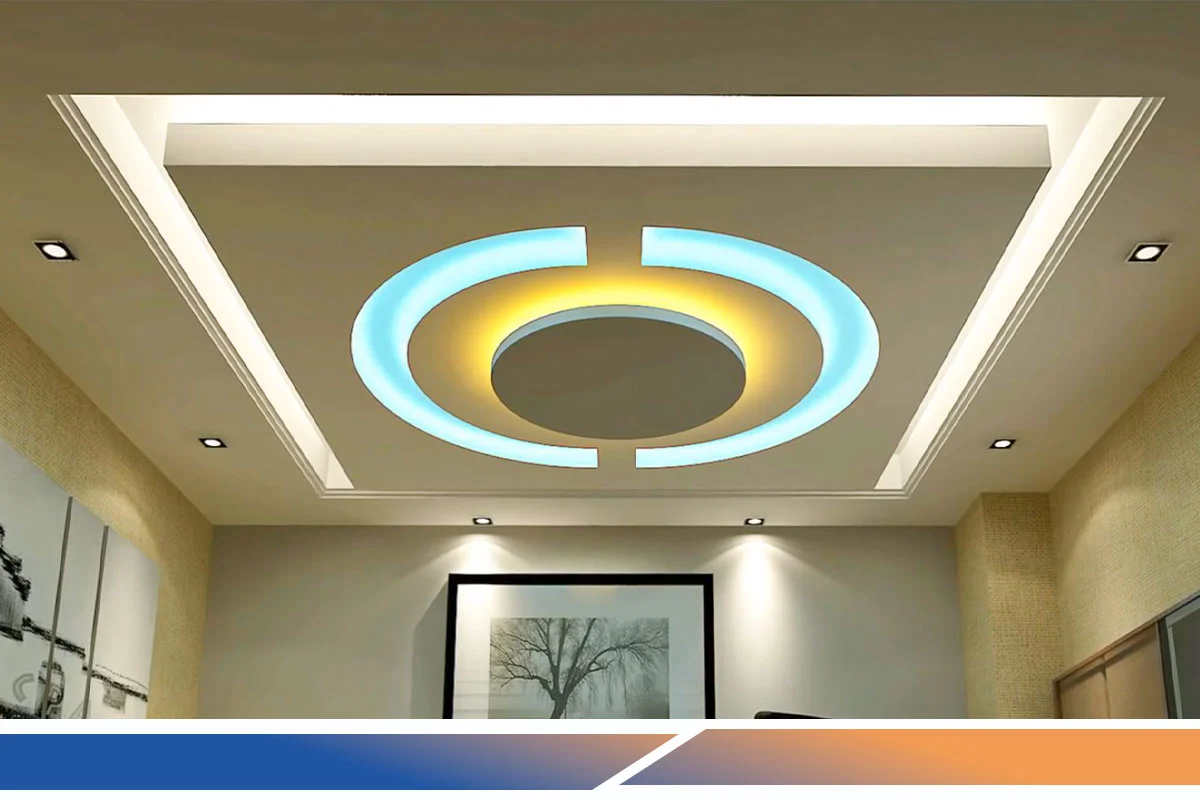
Features:
- POP ceilings provide you with a smooth surface that is perfect for decorating and paint finishes.
- They can be created in countless varied shapes and configurations to be used creatively.
- They weigh less, and so they can be easily transported during installations.
Best for: POP ceilings are best for living rooms, hallways, and lobbies where decorative appeal and custom designs are desired. They are perfect for homeowners who want intricate patterns, moldings, or artistic ceiling work.
Pros:
- They can be easily modified to produce distinctive and complex patterns.
- They are ideal to provide interiors with an attractive appearance.
- They are more affordable than most high-end luxury options in ceilings.
Cons:
- They are prone to water damage and so can’t be employed in wet environments.
- They require high-grade labour to get the requisite excellence and precision.
Price in Nepal: NPR 140 - 200 per sq ft.
4. Metal False Ceiling (Aluminum & Steel)
Aluminum or steel false ceilings are composed of metal sheets, which are long-lasting and look very modern and industrial. They are fire, water, and pest resistant, and therefore are suitable for application in commercial areas for a long period.
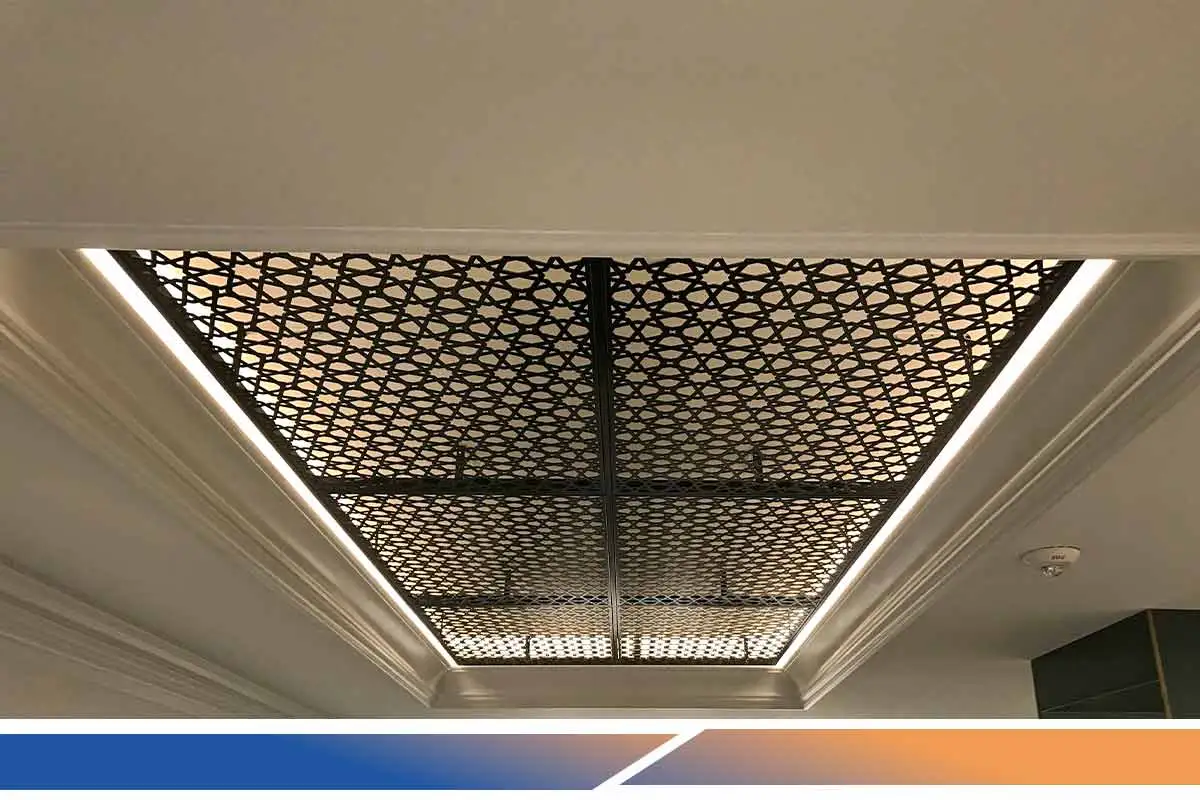
Features:
- Metal ceilings are very durable and can last despite wear and tear over time.
- They are fire and humidity-resistant and, as such, can be a safe choice.
- They have a contemporary, industrial appearance that is well-suited to modern-day commercial locations.
Best for: Metal false ceilings are suitable for factories, showrooms, airports, and commercial buildings that require long-lasting, low-maintenance solutions. They are also a good choice for industrial-style interiors in modern offices or retail spaces
Pros:
- They live long and require very little maintenance.
- They are resistant to termites and dampness, thus they can withstand varied environments.
- They are also recyclable, thus an environmentally friendly choice.
Cons:
- They feel cold in a room based on the type of material they are made from.
- They are not as visually varied as other ceiling finishes.
Price in Nepal: NPR 200 – 300 per sq ft.
5. Wooden False Ceiling
Wood false ceilings bring a touch of warmth, style, and luxury to any room. They are good heat insulators and can be designed in an assortment of styles to blend in well in period as well as contemporary interiors.
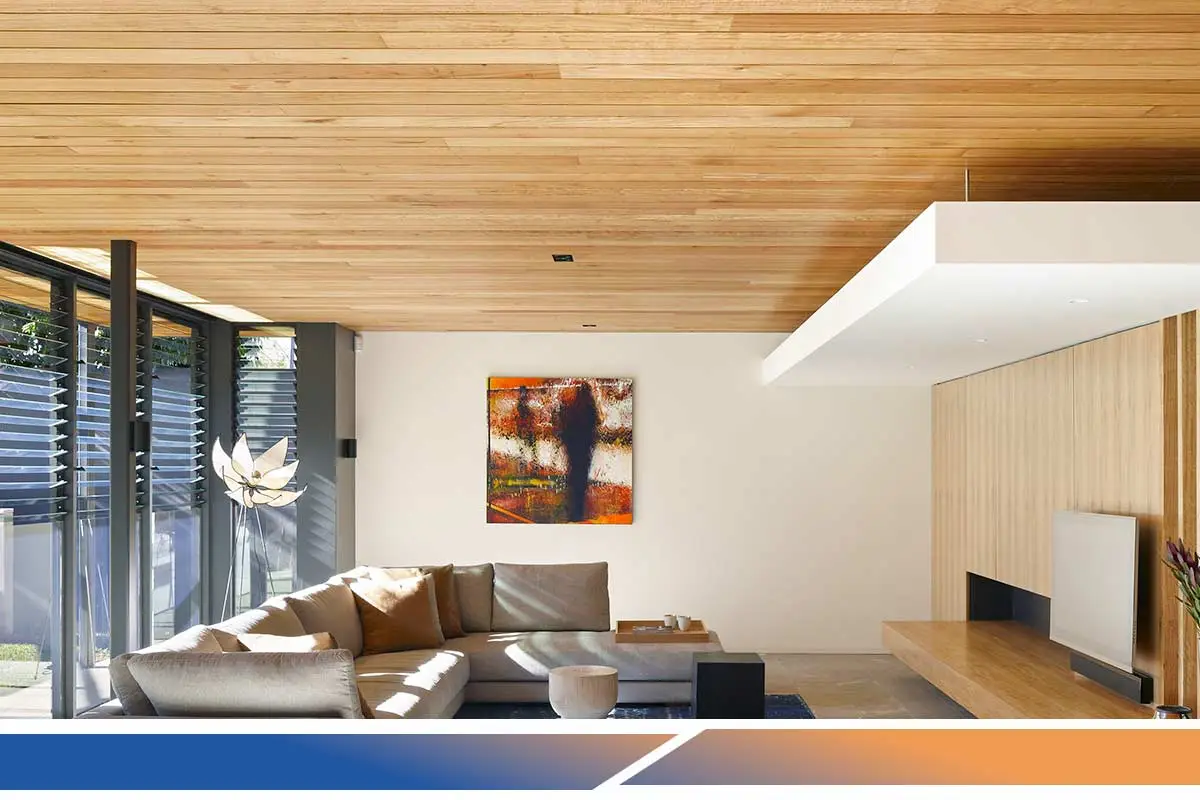
Features:
- Wood ceilings stand out in muted, natural hues, warming interior spaces.
- They are well-insulated, so the rooms are comfortable regardless of the seasons.
- They can be imagined within one's mind to accommodate traditional and modern contexts.
Best For: Wooden false ceilings are perfect for premium homes, luxury hotels, and resorts where warmth, elegance, and a rich ambiance are priorities. They are also great for creating cozy living rooms, lounges, or executive spaces.
Pros:
- They exude timelessness and refinement, which explains the general ambience.
- They offer great sound insulation, improving the room's sound.
- They live long if well-maintained and well cared for.
Cons:
- They cost more than other materials used in making false ceilings.
- They become susceptible to moisture and termites if they are not adequately treated.
Price in Nepal: NPR 300 – 600 per sq. ft.
6. Glass False Ceiling
False glass ceilings offer a modern, contemporary appearance in clear or frosted finishes. The mirror-like finish bounces back optimum natural light and offers an impression of expansiveness, frequently augmented by innovative backlighting.
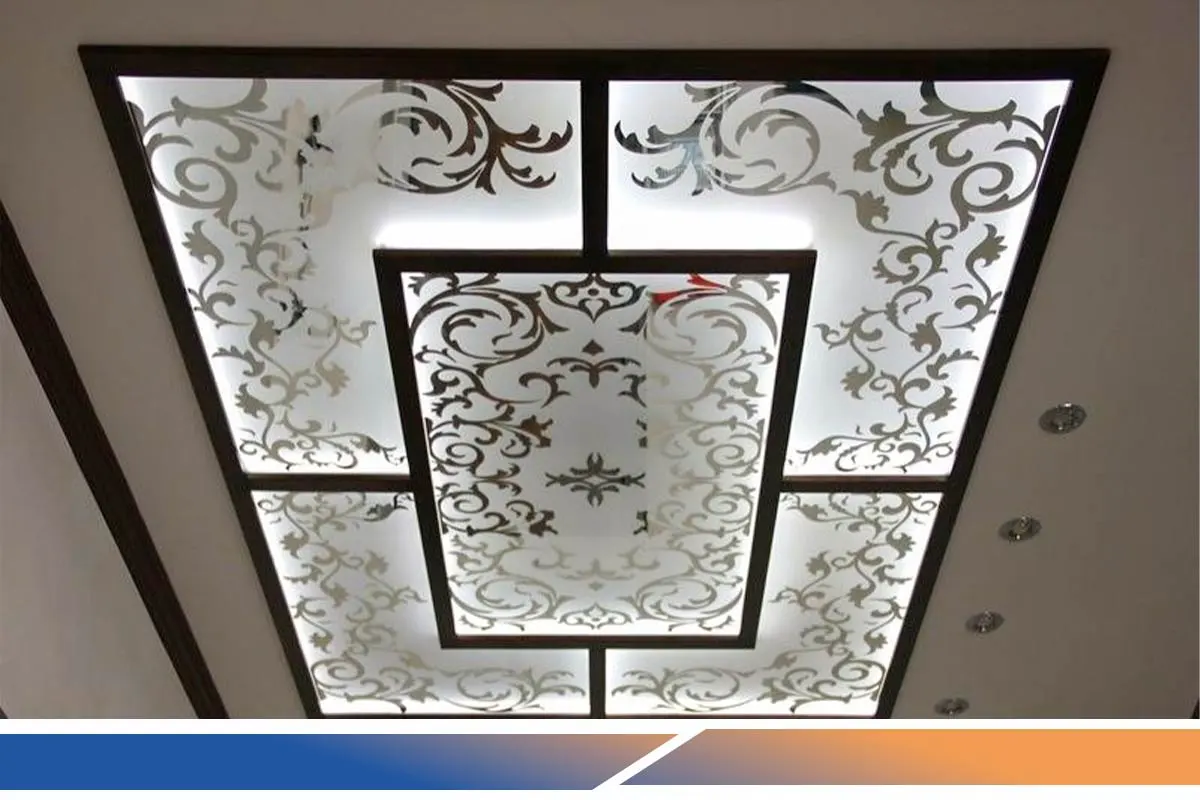
Features:
- Frosted or transparent style glass ceilings can be used for varying effects.
- Their mirror surface provides a feeling of expansiveness to the room.
- They can be used in combination with a backlight to create visual drama.
Best for: Glass false ceilings are best for modern commercial spaces, high-end restaurants, and designer homes where a sleek, contemporary look is desired. They work well in spaces that need to appear brighter, more spacious, and visually striking.
Pros:
- They possess a streamlined, contemporary, and trendy appearance.
- They can boost the ambient light in a room to make the room bigger.
- They can be easily kept clean and maintained.
Cons:
- They are more prone to damage than other ceiling products.
- They entail increased costs of maintenance and installation.
Price in Nepal: NPR 400 – 800 per sq ft.
How to Choose the Right False Ceiling for Your Home?
With so many options of materials, styles, and finishes in the market to choose from, choosing the ideal false ceiling can be daunting. The trick lies in finding the right combination of functionality, beauty, and cost to have a ceiling that not just looks stunning but performs exactly as needed over the years.
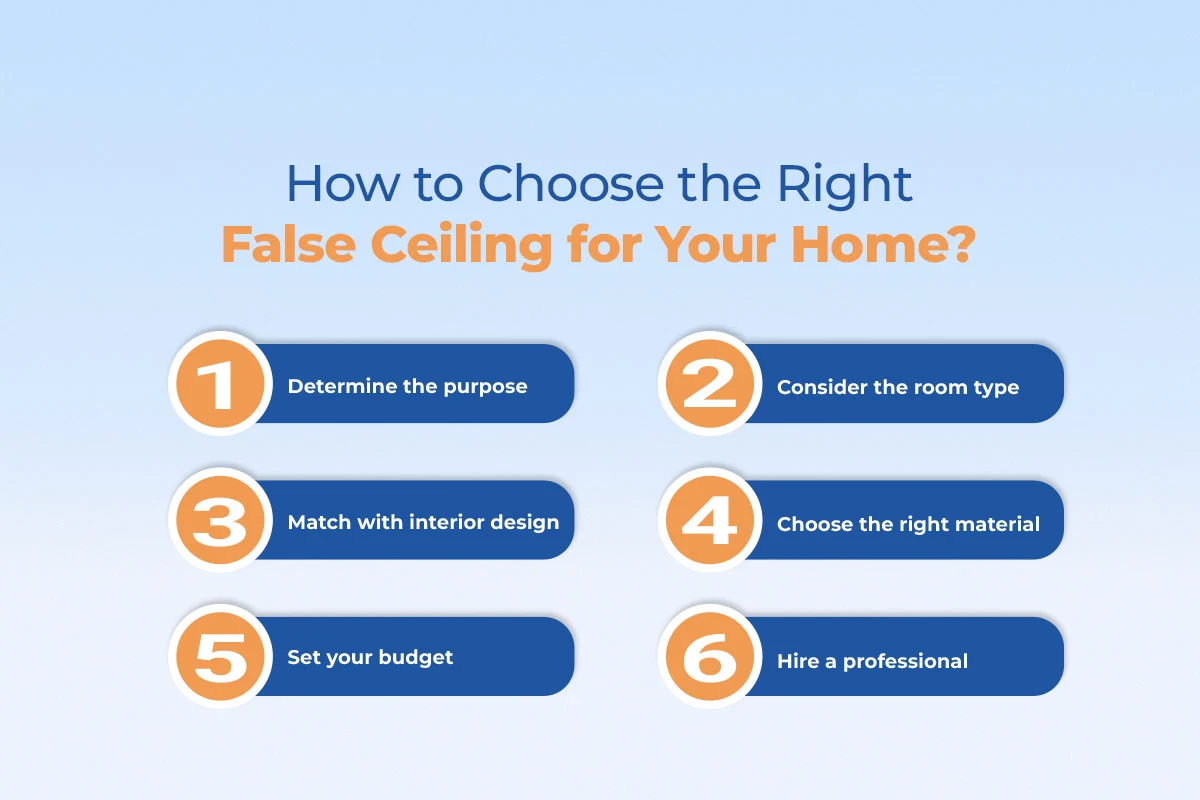
Here's how to choose the right false ceiling for your home:
- Determine the purpose: Before you pick a false ceiling, you must first determine if you'll be requiring aesthetics, insulation, soundproofing, or any of the three. The understanding of purpose provides a choice of a design and material that would serve your purpose and avoid unnecessary expenses.
- Consider the room type: Every room has its requirements, so choose the false ceiling material accordingly. Bathrooms and kitchens, for instance, require PVC as they offer moisture resistance, whereas living rooms require wood to get that warm and sophisticated look.
- Match with interior design: Your false ceiling must be a coordination of color, texture, and theme of your current decoration. The coordination of the design will provide a uniform look and draw your space in a more significant way.
- Choose the right material: Choose a ceiling material that provides you with durability, resistance to moisture, and maintenance ease, depending on the environment of your room. This will help your ceiling look and function effectively in the long run.
- Set your budget: Consider the initial cost of installing and future maintenance costs when planning how much to budget. That way, you avoid overspending and end up investing in a ceiling that’s affordable in the long run.
- Hire a professional: A professional can guarantee a correct fitting and smooth finish. It can also enhance the life of your false ceiling by ensuring the proper treatment and fitting of materials.
Wrapping Up!
False ceilings are no longer a luxury; they’ve become an essential element of modern interiors in Nepal. Whether you prefer the affordability of gypsum, the practicality of PVC, or the luxury of wood, there’s an option for every style and budget.
For budget-friendly yet stylish interiors, Gypsum and PVC ceilings are great picks. For those seeking premium elegance, Wooden and Glass ceilings stand out.
Looking to transform your interiors? Contact Jadan Construction Group today for expert false ceiling installation services in Nepal.
FAQs
1. Which false ceiling is long-lasting?
Metal and wooden false ceilings, with proper care, can last over 15–20 years.
2. How do you calculate a false ceiling?
Measure the room’s length and width, multiply for total square feet, then multiply by the per sq ft. cost of your chosen material.
3. Which false ceiling is best for a home?
Gypsum ceilings are ideal for most homes due to their balance of style, affordability, and durability.
4. Is a false ceiling good for hot weather?
Yes, false ceilings help insulate rooms, reducing heat in summer.
5. Which type of false ceiling is cheaper?
PVC ceilings are generally the most affordable while still being durable and water-resistant.







